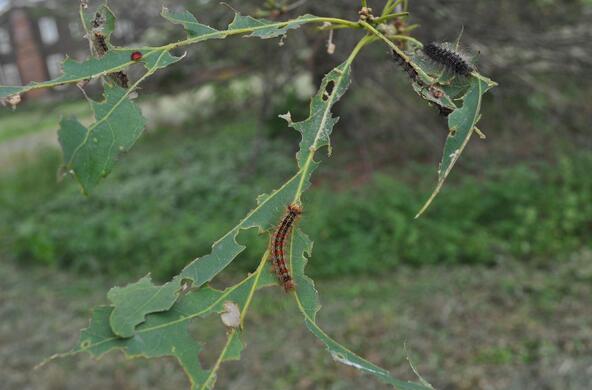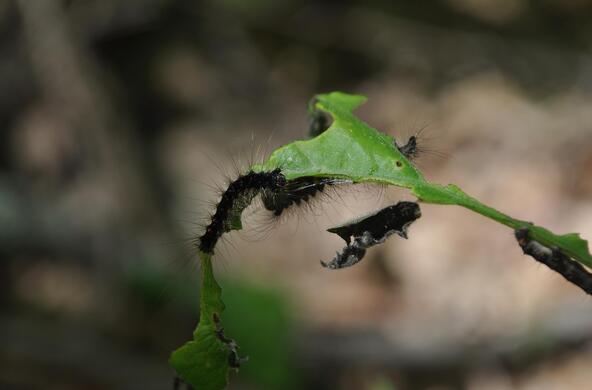In Ballard Park in Ridgefield, there are some lovely, thick-trunked, big-canopied beech trees, perfect for providing shade on a summer's day.
They are old trees and despite their beauty, they're not healthy. They have beech bark disease.
"We're treated them for it," said John Pinchbeck, town tree warden. "But there's one in the corner that's in bad shape."
Because they are in a park, the town has the luxury to trying to halt the progress of the disease. For the millions of beeches in Connecticut forests, that option doesn't exist. Although it spreads slowly, the disease is nevertheless spreading.
"It's more common in the northern part of the state," said Jeff Ward, the forester at the Connecticut Agricultural Experiment Station in New Haven. "In the southern part of the state, it can be patchy."
Ward said there seems to be a genetic component to beech bark disease. He's seen stands of beech trees that all seem to be infected near trees that seem disease free.
The suckers that grow from a diseased tree -- like the small trees that grew from the stumps of American chestnuts during the catastrophic chestnut blight in the first half of the 20th century -- grow to a certain height, then die.
And while those suckers can produce a dense, brushy cover, it's no substitute for a full-grown tree, throwing off a mast of nuts each fall that feeds rodents, birds and black bears.
"Beech trees are really important trees for wildlife," Ward said.
Gary Lovett, a forest ecologist with the Cary Institute of Ecosystems Studies in Millbrook, N.Y., said beech trees, along with maples and birches, are the dominant trees in the Northern hardwood forest.
As its name suggests, the forest favors trees that can manage cold weather.
"You'll find more beech in Litchfield County that in southern Connecticut," Lovett said.
Beech bark disease, which first showed up in Nova Scotia in 1890, then had a second burst of activity in New York City in the 1930s, is a combination of insect and fungal damage.
An insect called a beech scale eats into the tree. Two different fungi enter the tree through the hole the scale leaves behind and infect the tree, causing large cankers to grow outside.
"It can girdle the tree," Ward said.
The disease is now in beech trees from Canada to Pennsylvania, with pockets of it showing up farther south and west.
Lovett said beech bark disease has to been seen as part of the continuum of imported tree diseases. The scale isn't native. It came from Europe on imported trees, then began attacking the native species.
Lovett ticks off the other diseases and insects that have harmed the North American forest -- chestnut blight, Dutch Elm disease, the hemlock woolly adelgid, the emerald ash borer.
If and when there's another serious infestation of the Asian long-horned beetles -- there has been one in the woods south of Worcester, Mass. -- thousands of maples would have to be destroyed to control the insects' spread.
These infestations cost the U.S. about $5 billion a year in tree removal, Lovett said. There is also the ecological damage that results from an important tree species in the forest dying off.
And yet, Lovett said, the federal government is loath to either strength laws to prevent such insects and diseases from entering the U.S. or to properly fund the U.S. Department of Agriculture's Animal and Plant Health Inspection Service, which now has the responsibility of guarding the country against such biological invasions.
"Better regulations and better funding are not popular in Washington right now," Lovett said. "We're being penny wise and pound foolish."







